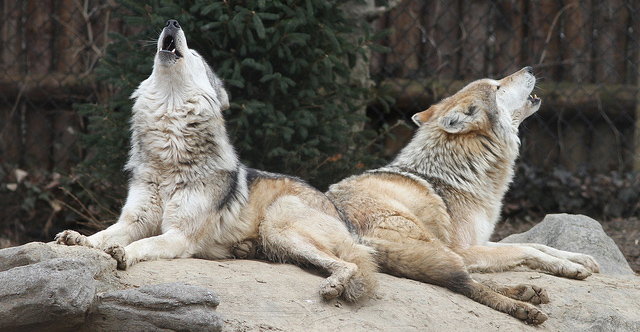The challenge with contrasting wolf and dog behavior is twofold. First, most wolf behavior studies have been conducted on wolves living in captivity; however, captive wolves behave quite differently than wolves living in the wild with little or no human contact. The assumptions made about wolf behavior based on captive wolves, may not be entirely accurate. Secondly, the process of domestication itself changed many wolf-like behaviors as hundreds of breeds were developed over time for a wide range of purposes. As we know, domesticated dogs come in a vast number of shapes, sizes and colors with various skill sets and temperaments.
One theory about how our ancestors helped to domesticate dogs suggests they kept and influenced the breeding of the most docile wolves in order to create the qualities we most enjoy in our pet dogs today. They desired wolves that could be easily led and trained, were less aggressive, more social and were not fearful of man. Wolves that were less likely to challenge man’s leadership could be more easily trained to perform a task or become a friendly companion. Interestingly, those desired qualities are found in wolf pups. Neoteny is a term that describes adult animals that evolve to retain many of their juvenile traits, which is what our ancestors have created with the modern day dog, a wolf that has retained its pup-like qualities. Dogs traits such whining, barking, submissiveness, playfulness and being free of fear exist in wolf pups, but are rarely observed in adult wolves. Even the physical wolf pup traits of having smaller and shorter teeth, less powerful jaws and shorter muzzles are found in most domesticated dogs.
So, your dog may not be a wolf in dog’s clothing, but there is a little bit of the wolf in each of our dogs, a wolf pup that is!


THIS. I love this post! So many studies are applied to dogs that have been done on wolves in captivity. Dogs and captive wolves do not have the same mindset.
Thanks! It is a fascinating subject and I wish there were more studies on wolves in the wild.
Well said. So much damage has been done to dogs by citing incomplete information about wolves.
I too hope we’ll have more studies of wild wolves. It’s only been recently that wolves have made enough of a recovery in the wild to be studied.
BTW, you might enjoy the book Three Among the Wolves by Helen Thayer. It’s the true story of a couple who lived near wolf packs with their wolf/dog hybrid. It’s an engaging story and an interesting way to see the similarities and differences with wolves and dogs in a natural setting.
Thanks Pamela, I will definitely check out the Helen Thayer book. I knew about the Dutcher husband and wife team and their experience with semi-captive wolves, but ‘Three Among the Wolves’ sounds fascinating because of their interactions with wild wolves.